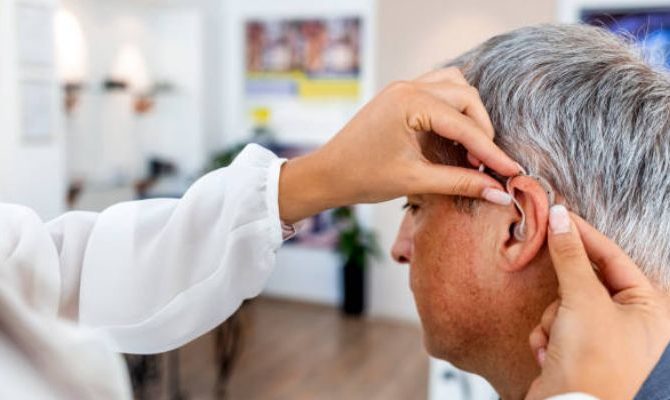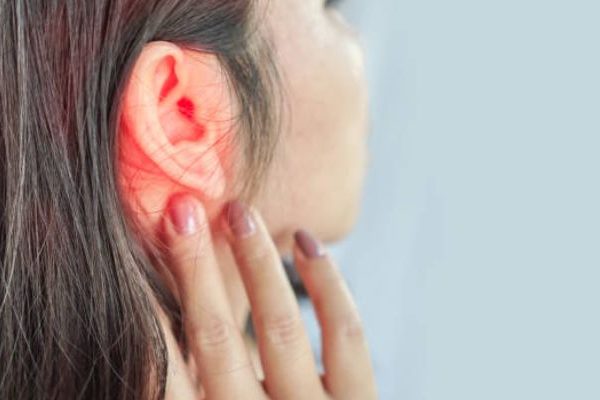
Handling Hearing Aids to Prevent Ear Infections
How does wearing hearing aids contribute to the risk of having an ear infection? Well, wearing hearing aids may not directly contribute to having an ear infection, but without proper cleaning techniques may increase the susceptibility to ear infections.
Before we talk about its relation, let us know about ear infections first. An ear infection, also known as otitis, is an inflammation or infection affecting the ear. This can be very painful and may cause fever. Adults and young children may get it because of certain factors, but it is mostly common to young children as their Eustachian tubes connecting the middle ear to the throat are shorter and softer.
According to the Centers for Disease and Control Prevention, there are different types of ear infections, and they can occur in various parts of the ear. It may occur in the outer ear, middle ear and inner ear. Most common signs of ear infection are ear pain, difficulty hearing or muffled hearing, drainage from the ear and fever.
Having an ear infection while wearing a hearing aid can be inconvenient. That’s why proper cleaning of the hearing aid worn should be done daily or every after use. If the hearing aid is not cleaned daily, it may potentially introduce bacteria which will result in ear infection.
Why Are You Having Ear Infections? Are There Any Types of Infections to Remain Aware of?
Considering 7.1% of adults above the age of 45 and more use hearing aids, ear infections are becoming widespread. Ear infection causes due to not maintaining the devices properly and using them by not following hygiene practices. While hearing aids do not directly cause ear infections, not cleaning them most certainly will.
Hearing aids are used all throughout the day, right from the time of morning breakfast to going to office to hitting the gym to coming back home at the end of the day. Needless to say, dirt and grime accumulate throughout the day. If you go on for days without cleaning the device, the chances of an ear infection increase. The build-up of bacteria, earwax, fungi, and other debris causes irritation to the ear canal. This naturally results in middle ear infections and outer ear infections. Also, improper fitting of hearing aids may cause cuts in the ears that can lead to infections.
Understanding that you have an ear infection and must see a doctor right away is crucial. Delaying might make matters worse. Keep an eye on for symptoms like:
- Tingling or severe ear pain
- Fluid coming out from the ear
- A feeling of fullness or pressure within the ear
- Muffled hearing or no sound at all
The slightest onset of ear infection symptoms calls for a visit to the doctor. Ear infections are not to be taken lightly. Let the professional assess the severity of the infection and find the right ear infection treatment.
You may have:
- Otitis media: Occurring in the middle ear, this ear infection is due to the accumulation of fluid behind the eardrum. Otitis media mostly happens because of a cold or allergy that forms congestion.
- Otitis externa: Occurring in the outer ear, this is an infection that results from trapped moisture, giving birth to bacteria. Swimmers are often diagnosed with otitis externa, which has earned the infection the name of Swimmer’s Ear.
Preventing Ear Infections by Taking Proper Care of Hearing Aids
Simply establishing the right cleaning habits and following them will ensure that the hearing aids remain clean and that you steer clear of ear infections. The onset of ear infection symptoms signifies that you need to clean the devices right away.
Clean the Devices Regularly by Using the Right Tools
Dirt and earwax accumulation on the hearing aids is grounds for breeding bacteria and fungi. It not only impacts the device’s functionality but also results in severe ear infections. Use a pick and brush from a hearing aid cleaning kit to gently remove the debris. Wash your hands before the procedure, and disinfect the surface with a mild cleaner.
Invest in a Hearing Aid Dehumidifier
A drying box or a dehumidifier has air or desiccants along with UV lights to draw out moisture from the device. Keeping the hearing aids in the dehumidifier when not in use is a good habit; this will keep them dry and eliminate chances of bacteria growth. You will have higher chances to prevent ear infections.
Keep the Devices Dry at All Times
Whether you are going for a run in the park or hitting the gym, always remove the hearing aids after coming back home. Dry them thoroughly whenever they are exposed to moisture or sweat. Prolonged exposure to moisture will cause bacteria and fungus growth. Also, be alert when applying sunscreen or moisturizer on the face; getting them on the device accidentally will cause problems.
Store the Devices in a Safe Place
Make it a habit to remove the hearing aids at the time of bathing and sleeping. Disinfect them with a non-alcohol-based cleaner and then store in a dry and safe area. Do not keep them anywhere in the washroom, as moisture is bad for hearing aids and will invariably lead to fungus growth.
Take the Hearing Aid for Professional Cleaning
Visiting a specialist at regular intervals is not only necessary for hearing aid cleaning, but it also ensures that the possibility of ear infections gets detected before they become too severe. Let hearing professionals find the right ear infection treatment for the benefit of your health. It is advisable to get the hearing aids professionally cleaned once every six months. Also, people with dexterity issues need to take the device to professionals for a thorough cleaning as they are unable to do the job themselves.
In Conclusion
Ear infections may turn serious if not addressed on time. The situation worsens for people who have to wear hearing aids on a daily basis. Do not try wearing the device, as that may increase the pain. So, instead of worrying, visit our clinic to have the device properly cleaned and also have your ears checked.
Discover more content on our blog!


Leave a reply